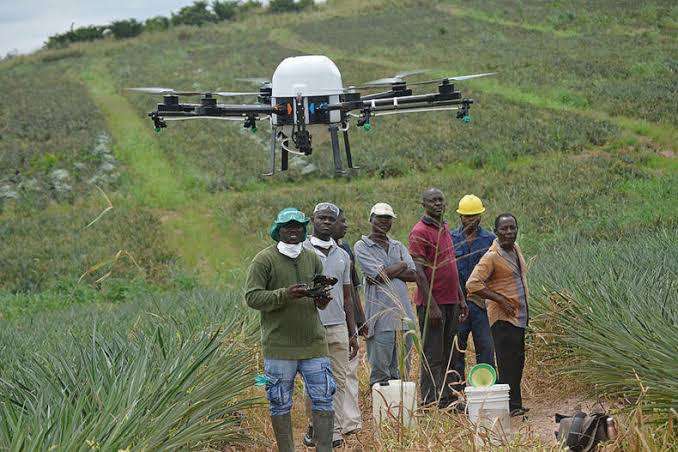The European Union (EU) has announced a new partnership with the Nigerian government to launch a satellite-powered agriculture initiative before January 2026.
The programme, dubbed, Innovative Agriculture, and also known as Copernicus, is a collaboration between the European Space Agency (ESA), and Nigeria’s National Space Research and Development Agency (NASRDA).
The EU’s Programme Manager for Agriculture in Nigeria and West Africa, Hugh Briggs, disclosed this in a recent interview with the News Agency of Nigeria (NAN).
“We have a new project called Innovative Agriculture, also known as Copernicus; it involves the European Union signing a contract with ESA to work directly with NASRDA because they have the technical capabilities,” he said.
What Is the Innovative Agriculture Project?
According to Briggs, the Innovative Agriculture project is designed to combine space-based technology with local execution to tackle persistent agricultural challenges.
“Currently, ESA is in close contact with NASRDA, and we are at the point of almost inaugurating the project in Nigeria, and this will be coming up maybe at the end of this year, but will not exceed January 2026,” he said.
Under the EU-funded initiative, ESA will bring in technical expertise, such as satellite analysis and digital modelling, while NASRDA will oversee implementation on the ground in Nigeria.
“NASRDA will also identify and recruit young people within communities, train them in innovative agriculture, provide them with tools, and teach them different applications.
Briggs added that the aim is to help farmers understand key variables such as soil conditions, crop suitability, planting schedules, and climate indicators—all derived from satellite data.
What This Means for Nigerian Agriculture
The project’s importance for agriculture in Nigeria includes:
- Farmers will use satellite information to guide decisions on crop type, soil treatment, and harvest timing.
- The partnership will build local capacity through training, mapping tools, and mobile deployment kits.
- Young Nigerians in rural areas will be recruited and trained to become digital agriculture field agents.
- Demonstration farms across seven ecological zones will showcase practical applications of space-based tools.
- Data collected will also inform extension services and agricultural policy at local and federal levels.
Where Will the Project Launch?
NASRDA has mapped out seven ecological zones across Nigeria where demonstration farms will be established.
According to Briggs, these sites would not only showcase how the technology works but would also be used to collect satellite data to inform better decision-making by extension workers and policymakers.
Building a Tech Hub and Future Expansions
As part of the programme’s plan, the EU and ESA will also fund the development of a state-of-the-art technology hub at NASRDA’s headquarters.
“The second aspect is that we are looking at setting up a state-of-the-art tech centre, like a hub in NASRDA, as part of the project. It will be a training center with modern equipment,” Briggs stated.
As the global climate crisis deepens and food insecurity intensifies, Nigeria’s decision to embrace space technology in agriculture may prove both timely and transformative.
If successfully implemented, experts says the Copernicus-backed Innovative Agriculture project could also reshape how African nations think about the role of science and data in feeding their people.
Talking Points
It is notable that the EU and ESA are partnering with NASRDA as regards the satellite-powered agriculture, an area where innovation is urgently needed in Nigeria.
Using space data to guide farmers on what, when, and how to plant could drastically improve productivity, especially for smallholders who often rely on guesswork and outdated methods.
At Techparley, we view this as a forward-thinking approach that connects global science with local farming realities, bridging a long-standing gap in rural agricultural planning.
The plan to train young people from within the communities is critical, not just for project sustainability, but for creating local tech champions who can drive long-term transformation from the grassroots.
To succeed at scale, the project must remain farmer-focused. Accessibility, local language adaptation, and ongoing community engagement will determine whether this becomes a one-off experiment or a lasting model for African food systems.





